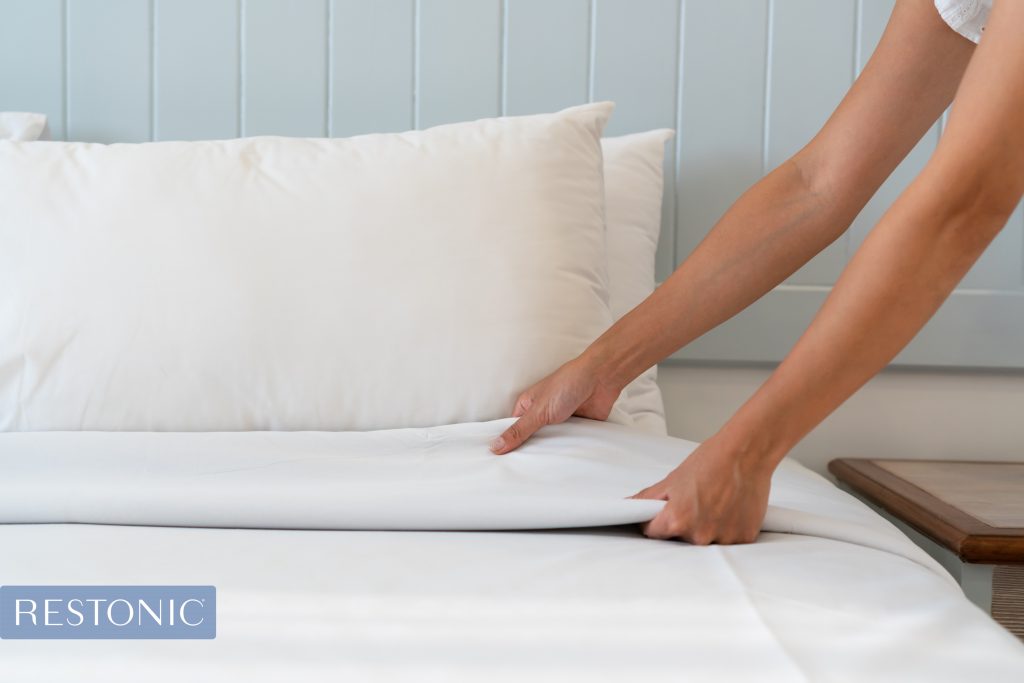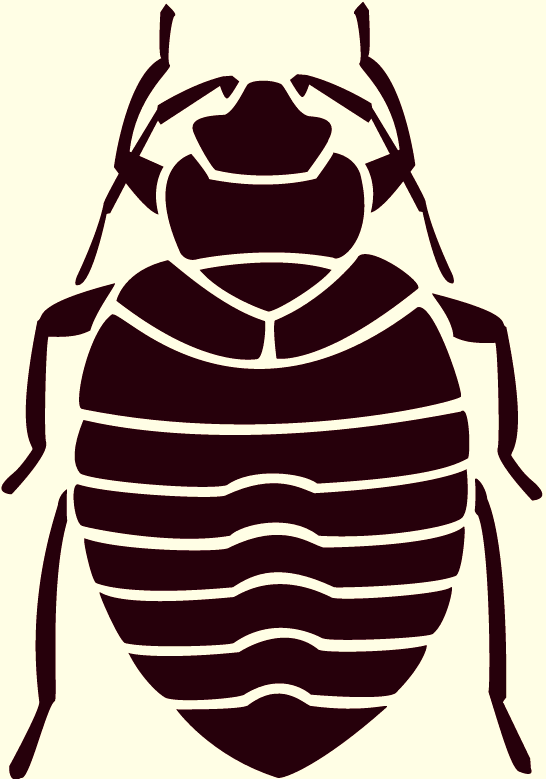What to do when the worst happens and you find a bedbug in your bed…
 Waking up with red, itchy welts? You might think it’s a spider or mosquito bite but, while it’s horrifying to consider a bedbug infestation, it’s more common than you might think. If you’re concerned you may have bedbugs in your home, it’s time to get serious and take action.
Waking up with red, itchy welts? You might think it’s a spider or mosquito bite but, while it’s horrifying to consider a bedbug infestation, it’s more common than you might think. If you’re concerned you may have bedbugs in your home, it’s time to get serious and take action.
Bedbugs are nocturnal, oval, brownish insects, roughly the size of a ladybug. They live in soft furnishings (sofas, beds, etc.) and feed off of human blood at night. Before feeding, their bodies are almost flat but afterward they swell and become more reddish in color. Although they feed every 5-10 days, they can lie dormant for over a year. Immature bedbugs, called nymphs, shed their skin five times before reaching maturity and require a meal of blood before each shedding. If the conditions are right, they can develop fully in a month and produce three or more generations per year.
For bugs that feed off of human blood, bedrooms provide an ideal breeding ground. Sadly, the problem is not waning. According to the National Pest Management Association (NPMA), “bedbugs are overwhelmingly found in private residences including apartments, condominiums and single-family homes and the incidence of infestations in these environments is on the rise.”
Although a nuisance, bedbugs aren’t thought to transmit disease.
Are bedbugs dangerous?
 While admitting you have bed bugs can be embarrassing, research shows the bugs do not transmit disease – but that doesn’t mean they’re not worrisome.
While admitting you have bed bugs can be embarrassing, research shows the bugs do not transmit disease – but that doesn’t mean they’re not worrisome.
According to Medical News Today, “About 50% of people who are bitten show no symptoms at all and do not know it happened. This makes it more difficult to prevent or identify potential infestations. Some individuals, however, may become ill and nauseous. It is possible get skin infections and scars from scratching the bites.”
Bedbugs are active while sleep and feed by piercing the skin and withdrawing blood through an elongated beak, much like a mosquito. They can feed for up to 10 minutes and often crawl away, unnoticed by the victim. Unlike fleas that feed mainly on the ankles, bedbugs can feed on any exposed skin. And unlike flea bites, they don’t have a red spot in the center – though both become red and itchy with time. If you’re not sure if you’ve been bitten by a flea, a mosquito or a bedbug, the only way to tell for sure is to find the offending insect.
Bedbug infestation signs:
- You’ve recently bought a used piece of furniture or mattress
- Blood stains on your sheets or pillowcase
- Dark or rusty spots of bedbug excrement on sheets, mattress, pillow, bedclothes – or walls
- Bedbug egg shells or shed skins in crevices where they hide
- An offensive, musty odor – from bedbug scent glands
Treating a bed bug Infestation in your bed and bedroom
Bedbugs avoid light and move quickly so while you’re stripping the sheets and blankets off your bed, look closely – bedbugs are easily visible to the naked eye. If you can’t find any obvious signs of an infestation, it’s time to dig deeper.
Remove the fabric cover of the box spring and closely examine the seams in the wood frame. Don’t forget to check around the bed, including inside books, telephones, radios, the edge of the carpet and even in electrical outlets.
If you’re not sure what to look for, call an exterminator for a professional analysis and quote. A licensed exterminator can inspect your house and treat hot spots with insecticide but the bulk of the work will still be on your shoulders.
- Wash all bedding, linens, curtains and clothing in hot water and dry them on the highest dryer setting. Stuffed animals, shoes and other items that can’t be washed should be put in the dryer at the hottest setting for a minimum of 30 minutes.
- Scrub your mattress seams with a stiff brush to remove bedbugs. Vacuum thoroughly afterward.
- Vacuum around your bed, paying close attention to corners and dark areas. After vacuuming, quickly dispose of the dirty vacuum cleaner bag outside in a sealed plastic bag.
- Get a tightly woven mattress protector that completely encases the mattress and box spring to keep bedbugs from entering or escaping. Remember, bedbugs can live up to a year without feeding so leave that cover on for a year before removing.
- Finish by repairing any cracks in the walls gluing down any peeling wallpaper. Remove any clutter from around the bed.
Rest well & wake up ready to go!
Better sleep gives rise to better mornings, bringing your goals into focus and dreams within reach. Hungry for more sleep info? Dig into these posts:
Eager for more sleep info you can really use?
Join our community
Facebook
and let's continue the conversation.
We'd love to hear what you have to say!
This blog does not provide medical advice. It is intended for general informational purposes only and does not address individual circumstances. It is not a substitute for professional medical advice, diagnosis or treatment and should not be relied on to make decisions about your health. Never ignore professional medical advice in seeking treatment because of something you have read on Restonic.com. If you think you may have a medical emergency, immediately call your doctor or dial 911.

